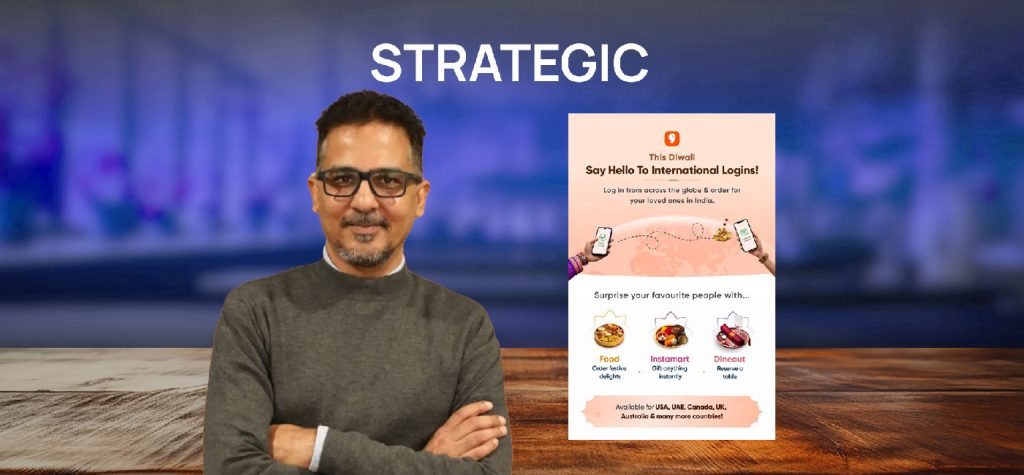Do you need an ingredient delivered in 10 minutes? No problem. Do you urgently need groceries or a package to send across town? Easy. Everyday inconveniences no longer need to disrupt your plans or add stress. Thanks to this must-have service that’s transforming the way we live.
This $11.3 billion company has redefined convenience and efficiency, seamlessly meeting needs at the tap of a button. Let’s discover how this brand disrupted the market and became a household name, delivering more than just goods—it delivers peace of mind.
Want to know more? Read on

A Shared Vision at BITS Pilani
It began with with Harsha Majety and Nandan Reddy, meeting as students at BITS Pilani.
Harsha, a senior passionate about photography and travel, became close friends with Nandan through shared activities on campus.
The two were drawn to the world of entrepreneurship. After a memorable backpacking trip across Europe, Harsha returned to India ready to explore new ventures.
Together, Harsha & Nandan brainstormed ideas in e-commerce, setting up their first startup, Bundl Technologies.

A Valuable First Attempt
Bundl was their initial foray into the startup world. It is a logistics service aimed at helping small and medium businesses handle shipping.
However, the market proved challenging, as Bundl’s logistics service couldn’t gain enough traction.
So, Harsha and Nandan decided to shut down Bundl and return to the drawing board, a choice that laid the groundwork for their next, game-changing idea.

A Niche in Food Delivery
While working on Bundl, Harsha and Nandan observed the demand for reliable, quick delivery services.
They realised many restaurants couldn’t meet customer expectations for speed or affordability.
Existing food delivery options required high order minimums, inconsistent service quality, or took too long to deliver.
They had faced delivery issues whenever they ordered in. That’s how the idea of their next venture was born. It named Swiggy because it was short and catchy.

Bringing the Idea to Life
Harsha and Nandan realized that a strong tech foundation was essential for Swiggy’s success.
Through a mutual friend, they met Rahul Jaimini, a skilled engineer at Myntra, who shared their excitement.
Rahul joined as Swiggy’s third co-founder, and the team was ready to tackle the food delivery landscape.

The Koramangala Chapter
Swiggy began in 2014 with a small team operating out of Koramangala, Bengaluru. Initially, the team focussed on a select group of 15-20 good restaurants without delivery services.
They distributed pamphlets near popular food joints and even took it upon themselves to deliver food orders, capturing photos of dishes to list on the platform initially.
At first, Swiggy was just a website with no mobile app, and traction was low. However, word-of-mouth referrals and a growing base of repeat customers gradually fueled Swiggy’s growth.
Restaurants started recognizing the potential of partnering with Swiggy. The team actively engaged with restaurant owners educating them about the benefits of online food delivery to encourage adoption.

Setting a New Standard
Swiggy’s logistics-focused approach set it apart. While other services took an hour to deliver, Swiggy committed to a 30-minute delivery time.
The team only partnered with high-quality restaurants that lacked delivery services, allowing Swiggy to be a reliable partner in quickly delivering great food to customers.
This strategy resonated with customers and gave Swiggy a strong foothold in the local food scene.

And Overcoming Challenges
The growth was encouraging, but it also brought its challenges. By April 2015, Swiggy was still operating as a small team with only a few delivery partners.
In the early days, the founders wore multiple hats—Nandan handled sales and customer support, Harsha made deliveries himself, and Rahul oversaw tech.
They needed help managing the budget to build an HR team, but they persevered, refining their model and focusing on customer satisfaction.

From the Struggles of Bundl
The lessons from Bundl helped Swiggy’s founders avoid the pitfalls they had experienced in their first venture.
They knew having a strong technical team and a clear focus on market fit was important.
This time, their persistence paid off, as the service started gaining traction with customers and restaurant partners who saw Swiggy as a valuable source of orders.

Boost Led to Swift Growth
Swiggy began with a $2 million seed investment from Accel and SAIF Partners. This early funding allowed Swiggy to lay the groundwork in technology and operations, leading to swift growth.
Over the years, the company has received $3.8 billion in funding over 19 rounds, cementing its status as one of India’s major food delivery platforms.

Expanding Beyond Koramangala
With growing popularity, Swiggy expanded to other parts of Bengaluru, and across India. By dec 2015, Swiggy had expanded reach, its team, and developed a mobile app to improve accessibility.
In its first three years, Swiggy expanded to seven cities. Key members, including founders Sriharsha Majety, Nandan Reddy, and Phani Kishan, envisioned transforming Swiggy into a comprehensive urban convenience platform targeting a 500 million-user base.
As of April 2024, Swiggy had partnered with over 150,000 restaurants and employed over 260,000 delivery executives, with a presence spanning 500+ cities across India.
The company’s valuation now stands at an impressive $12.7 billion, underscoring its position as a leader in the Indian food delivery landscape.

Digital Marketing Model of Swiggy
Swiggy’s digital marketing strategy focused on capturing the 18-35 age demographic, composed mainly of students and working professionals who have easy smartphone access and rely on quick meals.
Through targeted online campaigns, Swiggy established a strong digital presence that helped it connect with this audience effectively.
The company used digital marketing techniques, including SEO, social media, and email marketing, creating a successful model that stood out for its creative and relatable campaigns.

Through the Pandemic
During the pandemic, Swiggy innovated with Swiggy Genie, a pick-up and drop-off service, to help users send and receive items across town.
Later, Swiggy introduced Instamart, a quick-commerce grocery service to meet the surge in demand for essentials, contactless delivery, regular sanitization to ensure customer and delivery personnel safety.
Swiggy Access, a cloud kitchen let restaurant partners reach more customers without physical storefronts, adding user convenience and growth opportunities for partners.
Swiggy introduced EcoSaver, a program focused on sustainable practices. It reduced fuel consumption and carbon emissions by grouping or scheduling deliveries, aligning its model with eco-friendly practices, and improving delivery efficiency.

Rivals and Market Shifts
With intense competition in food delivery and quick commerce, food delivery giant contended with Zomato and new players like Zepto.
Despite leading in funding rounds, Swiggy faced valuation shifts and disruptions typical of fast-evolving digital businesses.

Missteps and Adjustments
The food delivery giant faced challenges expanding into tier-II and tier-III cities. Unlike its initial in-house delivery model, it tried franchising to match Zomato’s reach.
However, quality issues led to the eventual dismantling of the franchisee model, letting Zomato strengthen its position during the pandemic.
It appointed Rohit Kapoor, former India CEO of Oyo, focused on cost management, restructuring, and scaling operations beyond the top 30 cities with executives regularly visiting tier III and IV cities to boost local engagement, that let the company double its advertising revenue.

Acquisitions Adding To Growth
Amidst restructuring, Swiggy made strategic acquisitions, including Lynk Logistics for FMCG distribution and a stake in mobility platform Rapido.
The acquisition of Dineout strengthened food delivery giant’s move into table reservations, aiding Swiggy’s ongoing efforts to diversify and solidify its market position.

Swiggy IPO
The food delivery giant geared up for its IPO with momentum. For FY24, it reported a solid 36% increase in operating revenue to INR 11,247 crore, coupled with a significant 44% reduction in losses to INR 2,350 crore.
Through the year’s first three quarters, the company generated INR 5,476 crore, though losses stood at INR 1,600 crore.
Swiggy today is listed on the stock exchanges at a premium from its subscription price.

A Bold Future
As the food delivery giant enters this pivotal chapter, it aims for a valuation near $15 billion in its stock market debut, seeking to raise $1–1.2 billion.
A recent adjustment has set its valuation between $12.5–13.5 billion, positioning it for one of the year’s largest IPOs.
This step is more than just a listing; it signals the company’s commitment to growth and innovation, strengthening shareholder value, and reinforcing its leadership in food and rapid commerce.
How useful was this post?
Click on a star to rate it!
Average rating 3.2 / 5. Vote count: 5
No votes so far! Be the first to rate this post.
I’m Archana R. Chettiar, an experienced content creator with
an affinity for writing on personal finance and other financial content. I
love to write on equity investing, retirement, managing money, and more.
- Archana Chettiar













